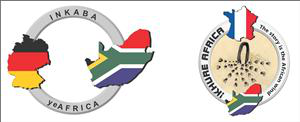Speaker
Mr
Thomas Muedi
(AEON - NMMU)
Description
The Karoo Basin is an area intruded by dolerite sills and dykes. It is also speculated that those dolerite rocks may have intruded through pre-existing fractures. Fractures are well known as joints by geologists. Fractures are commonly formed when the stress exceed the rock strength and they acts as pathways to the hydrocarbon migration, water and other fluids during Karoo dolerite emplacement.
The presence of opening of natural fractures networks in the Karoo Basin defines an economic shale gas potential. This project is going to explore the tectonic fracture systems and fractures related to the emplacements of dolerite sill and dykes. The emplacement of the dolerite dykes and sills are going to be modeled from the coastal plain of the Eastern Cape Province coastal region toward the Lesotho Escapement in order to test their chemistry and geochronological relationships. The density of joints will be statistically analyzed and joints density will establish the relations of joints with faults, lithology types and intensive brittle deformations.
The fracture or joint systems will be analyzed using the stereo-plot open source software. Fractures can display self-similarity pattern, their geometry is also going to be tested using ImageJ software. The GIS and remote sensing will be used to compile satellite images and map productions of the Shixini area geology. A radiometric dating technique is going to be used to date dolerite sill and dykes from the coast towards inland emplaced dolerites in order to establish and to test emplacement relationship. The outcome of this project could be an open window to the decision makers and could stimulate more interest on more studies to be conducted to understand the Karoo well before fracking could take place.
KEY WORDS: Fracture systems, dolerite dykes and sill, Fracking, Fractals and geochronology
Primary author
Mr
Thomas Muedi
(AEON - NMMU)
Co-author
Prof.
Maarten de Wit
(AEON - NMMU)

